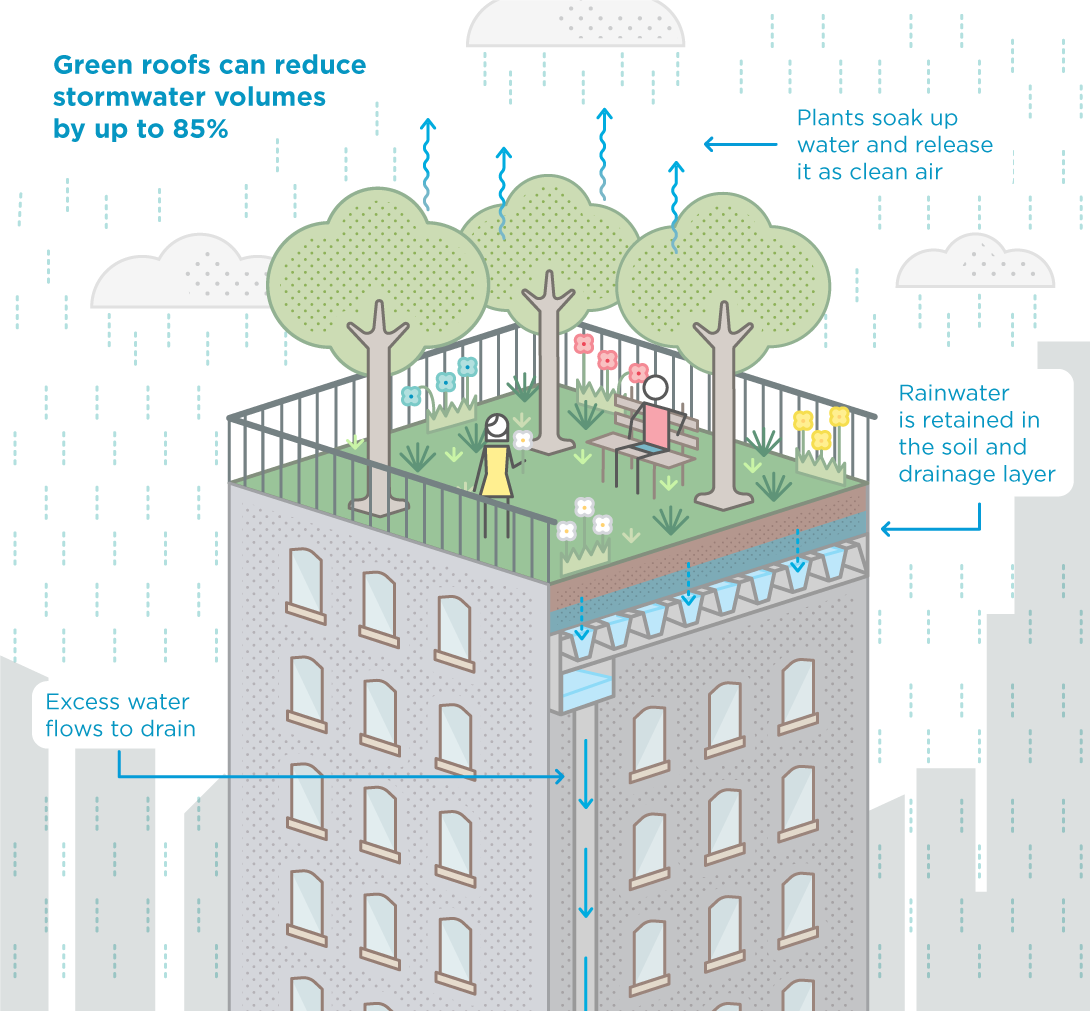Water Retention For Traditional Roof Vs Green Roof

In the german guidelines for green roof construction yearly values of green roof retention start at 40 and increase roughly 1 per 10 mm substrate thickness resulting in 70 retention at 250 mm after which it remains at 70 for layers up to 500 mm.
Water retention for traditional roof vs green roof. Green roofs typically provide stormwater retention as they capture water preventing water from draining and then allow the water to evaporate only through evapotranspiraton processes. We gathered roof runoff data for over 100 storm events for each green roof over a period of 23 months. As green roof plants mature and root systems grow storm water retention may increase. Manufacturers whose materials we use for landscape works are well known all over the world.
Blue roofs are designed to attenuate rainwater rather than drain it away as quickly as possible as in traditional roof drainage design. Drainage and water retention elements with low medium or high retention capacity are components of the green roof system. Retention works like this. Looking great energy efficient and environmentally friendly too green roofs better utilise an often neglected area.
The secret of green roof water retention is green. However a purple roof retains more water than any other green roof concept. For water retention performance we monitored runoff from four full scale green roofs including one built up system one modular tray system and two vegetated mat systems. Data collected from a study by researchers at the pennsylvania state university center for green roof research show that green roofs captured up to 80 of rainfall during rainstorms compared to 24 typical for standard roofs.
We need to think differently about the main purpose of a green roof. Traditional soil is heavy and packs tight after repeated rains reducing water retention and aeration for plant roots. Yes every green roof absorbs and buffers water. Abg blueroof offers a new development in the management of storm water by collecting and retaining rain fall within the actual roof structure before discharging at a defined controlled rate.
The trends between the guidelines and the simulations are similar although the absolute. Rain falls onto a relatively dry green roof and the green roof absorbs the water usually in pore spaces later the sun comes out and the plants use the rainwater to evapotranspire. This means that the water leaves the roof as vapor. As with anything though there are a few negatives and this post will aim to highlight both the advantages and drawbacks of implementing a green roof the benefits of.
However retention is not always effective as it fills up the entire empty storage space in green roofs and then takes time to dry out and make room for new. Green roofs are covered with plants and vegetation bringing a number of excellent benefits to every building. This is particularly beneficial on sites where land take.














































